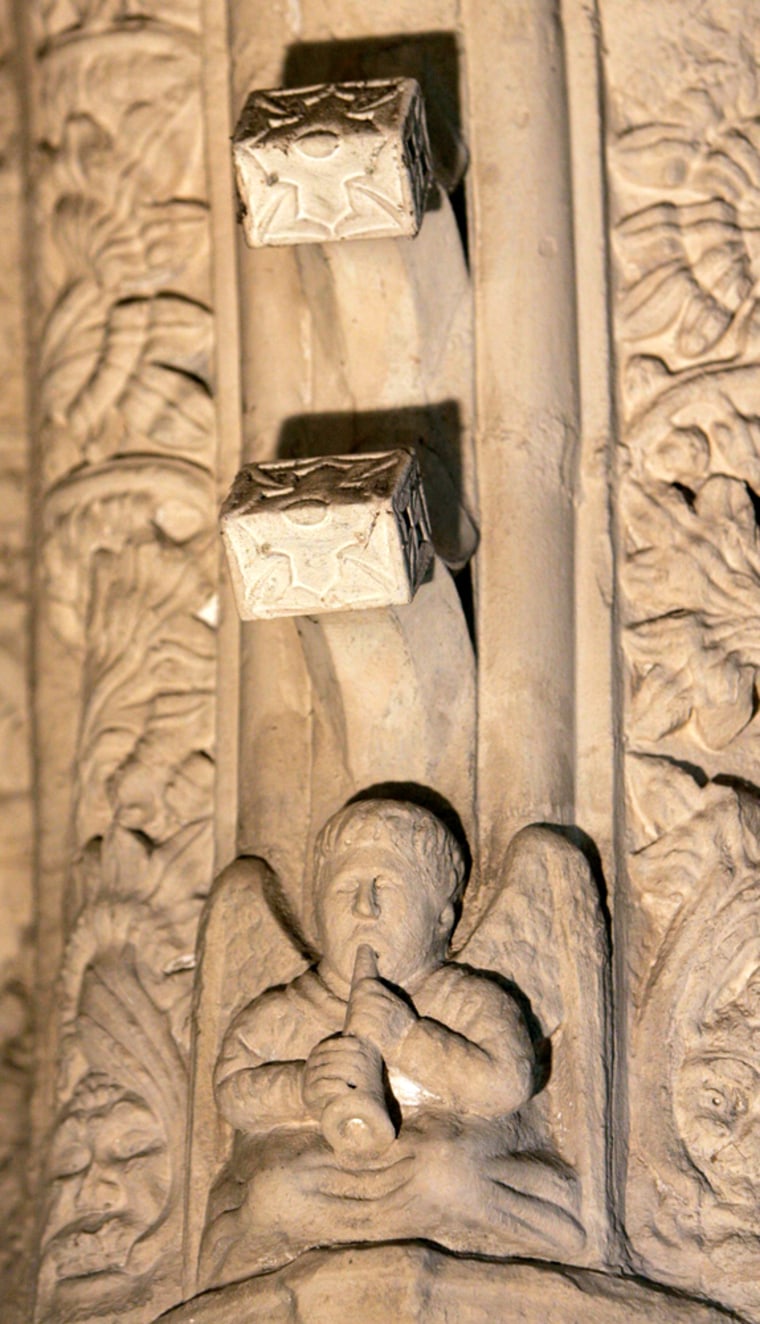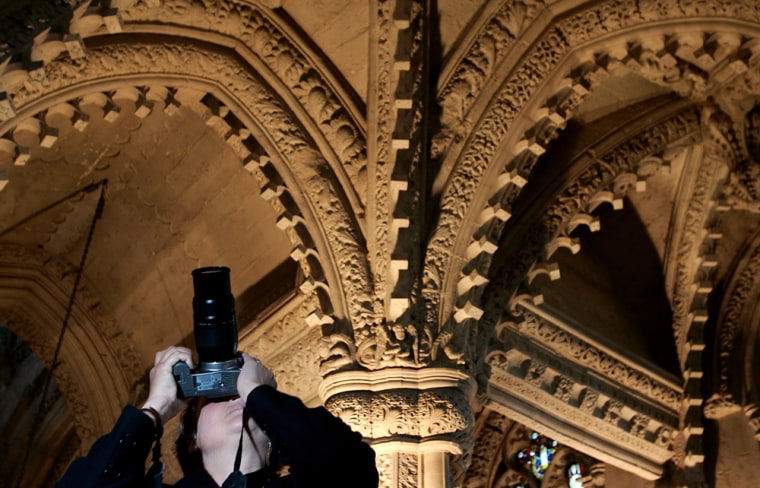Like a plot from “The Da Vinci Code,” a team of code breakers claims to have found music hidden for 500 years in intricate carvings at the church where author Dan Brown set the climax of the best-selling book.
Father and son team Thomas and Stuart Mitchell say they deciphered a musical code hewn into stone cubes on the ribs supporting the ceiling of Rosslyn Chapel in the village of Roslin, near Edinburgh.
“Breaking the code was a true eureka moment. It’s like we have been given a compact disc from the past,” said Stuart Mitchell, 41, a music teacher from Edinburgh. “But unlike the fiction of ’The Da Vinci Code,’ this is a tangible link to the past.”
The music has been recorded, and will get its official premiere in the chapel May 18.
Musical experts reserved judgment, but did not dismiss the Mitchells’ theory.
“We have 213 cubes (at Rosslyn), and the possibility that they have something to say is by no means implausible,” said Warwick Edwards, an expert on early Scottish music at Glasgow University. More research is needed, he said.

Gordon Munro, an expert on Scottish church music from the 1500s, 1600s and 1700s at the Royal Scottish Academy of Music and Drama in Glasgow, said, “I have heard the music and it is not impossible, but it can only be a reconstruction that is open to interpretation.”
“There is a series of shapes they are using, but I could not say if they would read the notes on the chapel ceiling from left to right or up and down,” Munro added.
The 15th-century chapel, 10 miles (16 kilometers) from Edinburgh, was built by Sir Gilbert Haye and Sir William Sinclair and is steeped in the traditions of the Knights Templar and Freemasonry.
Ground Zero for symbolism
The elaborate decoration and the mysterious symbolism have inspired many legends, among them that the building is a replica of Solomon’s Temple and that it is the resting place of the Holy Grail, the Ark of the Covenant or even the mummified head of Jesus Christ.
Brown’s novel, based on the theory that Jesus married Mary Magdalene and founded a dynastic line which survives today, climaxes at Rosslyn Chapel. “Symbology heaven,” Brown called it.
The Mitchells’ research centered on the ribs of a ceiling in the Lady Chapel. Rows of carved angels play instruments above the columns of cubes.
The elder Mitchell, 75, who was a code breaker for the Royal Air Force during the Korean War, said he spent 25 years working at the puzzle.
“Many of the angels had musical instruments and some were arranged as a choir, but there was one angel we couldn’t work out,” he said. “Then we realized she was carrying a musical stave, the lined blueprint for musical composition, and therefore we were looking at a coded piece of music.”
The five-line stave that Mitchell believes the angel is holding came into general use in the 16th century in the West, music historians say.
The science of sound
If the Mitchells are right about the meaning of the shapes, the people who built Rosslyn Chapel between 1446 and 1486 knew something about the science of sound that wasn’t generally known in the West until the 1700s.
The Mitchells believe the patterns on the cubes are Chladni patterns — created by vibrations of musical pitches.
The patterns are named for Ernest Chladni (1756-1827), a German musician who is also remembered as the inventor of the glass harmonica.
Chladni spread fine sand on metal or glass plates, then used a violin bow to make the plate vibrate. Sand gathered in parts of the plate which were not vibrating, creating patterns unique to each pitch.
Although the patterns are associated with Chladni, the effect had been noted a few decades earlier, by the English scientist Robert Hooke in 1665.
The Mitchells assert the effect was also known by Gilbert Haye, one of the chapel’s builders, who died in 1513.
“The Cymatics/Chladni patterns were inspired and found in the art of the ancient Chinese gong making which Sir Gilbert Haye would have discovered during his time in the Far East,” said Stuart Mitchell.
